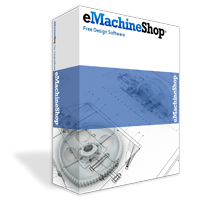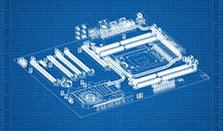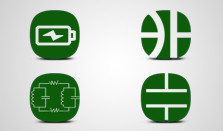No one wants to pay more than they have to for anything, let alone circuit boards.
But just like restaurants and hotels, you don’t always want to go with the cheapest choice.
Sometimes cheap manufacturers have slow manufacturing or long shipping times, which can be tolerable,
but sometimes unusually low prices are the result of low-grade materials and corners being cut
during manufacturing or quality inspection, something you don’t want to risk.
Don’t let a budget PCB manufacturer cause you serious problems when your PCB is assembled
and put to use. Instead, stick with a reputable, trusted manufacturer and design your PCB using
these 20 cost-saving tips and tricks as a checklist. The long-term benefits will far
outweigh any perceived short-term savings.
1) Size
PCBs can be made to be 500mm x 1100mm in size, and in some cases even larger,
but PCBs so large are very costly. Generally speaking, the larger a PCB is, the more it will cost.
This is due to not only the increased amount of materials used, but also the increased cost
for shipping. PCB designs under 100mm x 100mm are advised for the lowest pricing.
2) Shape
Routing of complex shapes and designs is usually not more expensive
than a square board with an identical bounding box. So have fun and be creative!
3) Designs per Panel
Consolidating multiple designs into a single design file can be a
cost-saving technique, but in some cases can backfire. Use this technique with caution,
and be sure to confirm that ordering your designs separately is not cheaper.
4) Quantity
Cost per board drops dramatically as volumes increase.
Be sure to check pricing for various quantities before ordering as the price difference might be minimal.
5) Layers
1 and 2 layer boards are the most commonly produced custom PCBs
and are by far the least expensive. Making a 2 layer board that is twice the size of an
identically functioning 4 layer board is often the cheaper choice.
6) Material
The most common PCB material is FR4 laminated fiberglass,
which also tends to be the least expensive. Other materials like aluminum, ceramic,
and polyimide will certainly be more expensive.
7) Material Class
Most materials have multiple classes within them.
FR4 for example has different grades depending on temperature resistance requirement.
While standard manufacturing processes commonly use TG 130-140, more temperature resistant
grades are available for those who require it and are willing to pay the premium.
8) Thickness
Pricing for FR4 boards with thicknesses ranging from 0.4mm to 3.2mm
can vary widely. 1.6mm is the most common PCB thickness, and often the cheapest.
It is not uncommon for pricing of thicknesses proximal to 1.6mm to be about the same,
and for pricing to only increase significantly for the thinnest and thickest PCBs.
Thickness can impact pricing in other ways too, especially for large quantity orders,
as shipping costs for thin vs thick boards can vary widely due to the difference in weight.
9) Trace Spacing
The smaller the trace or space between traces is, the more expensive
your board will be. Don’t make traces smaller or closer together than they need to be.
10) Hole Size
The smaller the hole required, the smaller the drill necessary to make
that hole. And small drills break and wear more quickly than larger ones.
It is not surprising that for this reason, the smaller your hole size requirement,
the more expensive your board will be.
11) Solder Mask Color
It used to be that if you wanted anything but green you would have to
pay an arm and a leg. Things have changed. Most colors can be had for no or little
additional cost with notable upcharges usually only occurring for special requests like matte colors.
12) Silkscreen Color and Placement
Restrictions on silkscreen coverage percentages are rare.
So go wild and include your logo or a cool negative space silkscreen on the top and bottom
of your boards. Better yet, do it in black. Do note that although multiple color silkscreen
is possible, it is not the norm, and thus pricing will not be the norm either.
13) Gold Fingers
Free gold? I don’t think so. You can be sure that where gold is involved,
the pricing will be higher. Avoid designing boards using gold fingers unless there is a
specific need for them to be gold.
14) Finish
Lead containing HASL is the cheapest finish, and many prefer it due to
its relative ease when soldering components. Still, it does contain lead, and is not allowed
for sale in the EU, California, or India. This is one of the reasons lead-free HASL is
available at a slightly higher price. ENIG, a gold-based finish, and other less common
finishes can all be had for a bit extra too. Even still, if you don’t expressly need a
higher-end finish, skip it.
15) Copper Weight
1 oz copper weight PCBs are generally plenty for most low power
applications. If you are working with higher voltage and/or amperage, higher copper weight
may be necessary. Copper weight refers directly to the thickness, and in turn weight, of a 1
square foot area of copper. The heavier the weight, the thicker the copper, and the more you will spend.
16) Special Requests and Additional Options
Special? You guessed it. Going to cost more. All sorts of specific and
unique things can be done during the manufacturing process for a bit more.
17) Delivery Speed
You can usually shave a few days off of your delivery time by paying
for express manufacturing or overnight shipping. Do the math to figure out your cost per day
saved to figure out the most economical method of meeting your timeline.
18) Import Duties, Tariffs and Delays
If you order from overseas you risk lengthy customs holdups, and duties
and tariffs being levied. It is not uncommon for overseas manufacturing to at first appear
cheaper, but then turn out to be more expensive after duties and tariffs are applied.
19) Test Batch
Ordering a small test batch before placing a big order is always advised.
It may seem more economical to skip this step, but if your untested design has an issue that
requires your boards to be remade, you risk paying for a full order twice.
20) Free Value Add Services
Many manufacturers charge for setup, E testing, Automated Optical
Inspection (AOI), and even customer service if your order cannot be placed 100% online.
Others, like Pad2Pad, offer free USA shipping, free testing and inspection, and great
customer service no matter how you order. Working with a manufacturer that offers valuable
bonuses is a great way to save.






